|
Shortly
after the end of the Marcomannic wars the Romans started with the
reconstruction of the damaged or totally destroyed North-Pannonian
frontier fortresses. During the reign of the Emperor Commodus most
of the earth-and -timber forts were rebuild in stone. In this time
a constructions of a stone fort started on the ruins of the
original fort - bridgehead of Brigetio.

The
archaeological excavations shows, that it was a greatly fortified
fort spreading over area of more than 3 hectares. The stone fort
was of a square ground plan (175x175 m) with oblong corners,
oriented according to the main geographical directions. Its two
meters wide wall were perhaps 4-5 m high. From the inner side the
walls were supported with an earth rampart. In the middle of each
of the walls the gates protected with a couple of towers were
situated. The main southern gate (porta decumana) near the
bank of the Danube, was important for connection with legionary
fortress in Brigetio. It had a double entrance construction with
middle pillar supporting the vaults. Gate towers were of rectangle
ground plan and partially stuck out from the walls. The roads
under the archways of the gates were paved with rubble of quarried
stone. The northern gate (porta praetoria) facing the
potential enemy had only one entrance. The corner towers, as well
as other towers between the gate and corner, were adjoined to the
inner side of the wall. The two parallel V-shaped ditches and
earth ramparts surrounding the fort from three sides, increased
the protective power of the fortification.
The construction of this fort was very hard. All
the necessary stone, chalk, timber, wood, bricks and tiles for the
construction had to be transported by boats from the opposite bank
of the Danube. The most of the stamps on the bricks are those of
the I adriutix legion from Brigetio. It is clear, that this
legion supplied and supervised the fort construction. Some bricks
however, were transported here via the Danube from much more
distant places.
 
The
inner area of the fort is known mostly from the earlier
excavations and plans of J. Tóth-Kurucz. Traditionally, the main
axis of the fort were the roads (via decumana and via
principalis) which always connected two opposite gates. The
administrative complex was, as usually, situated in the centre of
the fort, but untraditionally it was shifted towards the west
gate. Omnipresent Roman baths were situated in the south-east area
of the fort. The buildings excavated along the northern part of
the wall, could be according to their typical ground plan with
supporting pillars, determined as granaries (horrea) for
grain storage. The other buildings organised in street system were
used as the army barracks and stables. Some of the ground plans
which were excavated and documented in drawings by J. Tóth-Kurucz,
do not respect the principle of this street system and are perhaps
of younger date.
In the south-west area of the fort were recently
uncovered remains of another military barrack in a length of 30 m.
It has a typical rectangular ground plan with the inner area
divided by walls to the rooms which were used as soldier bedrooms.
Well preserved is only the drystone footing of one of the inner
walls. The level of trampled earth floor was preserved only in two
rooms. The barrack walls were probably of timber, or combination
of timber and mud-brick construction. This building was destroyed
by fire presumably around the middle of the 3rd century
AD - highly probably during the riots which burst out again on the
northern Roman frontier. In later reconstruction works, the area
of this barrack was levelled and stones of the wall bases were
taken out and reused elsewhere.
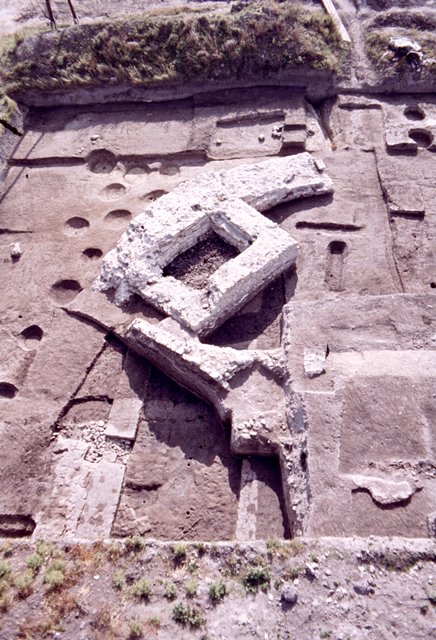

In this part of the fort
also the remnants of the two large bakery ovens and more wells
were recovered. The construction of the wells follows the
traditional Roman model. After the digging of a circular shaft and
reaching the underground water table, the damaged wooden barrels
were used for the lining of the bottom of the well. The upper part
of the shaft was then lined up with the circular stone wall. The
dendrology analyses showed that the wooden barrels were made out
of pine and fir wood.
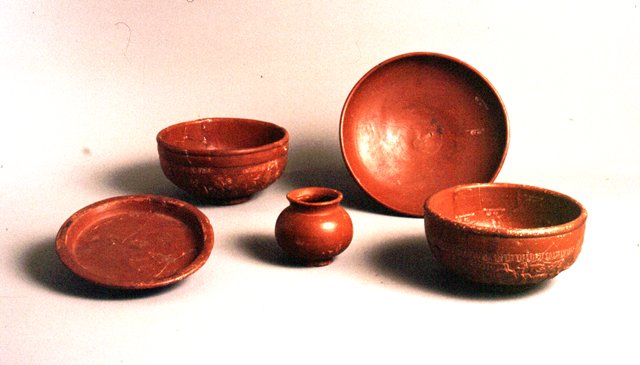

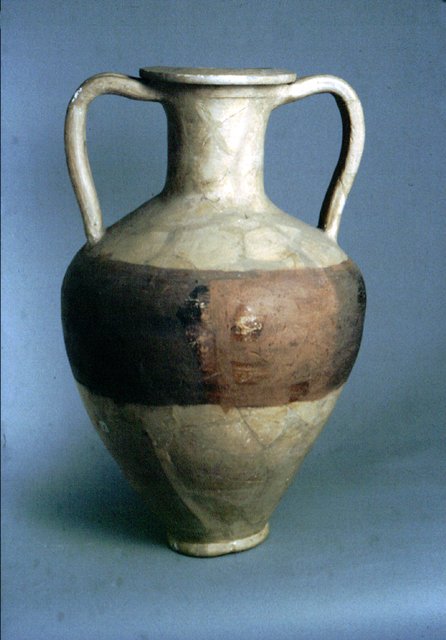 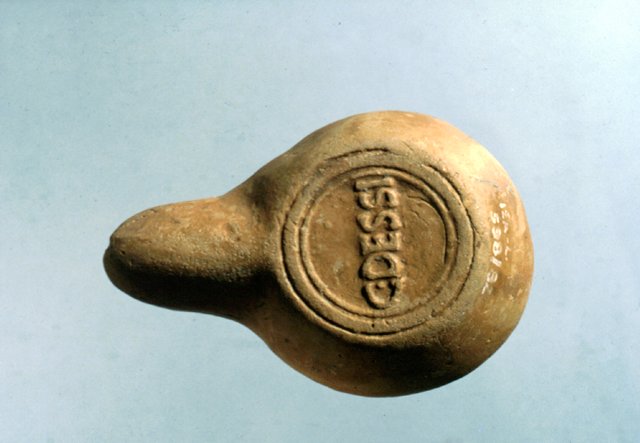
The
finds of objects used for food storage, preparation and serving
the meals, lamps, but also animal and charred plant macro-remains
document that the troop occupying the fort was totally dependant
on supplies (food, raw materials, final products...) from Brigetio
and adjacent North-Pannonian territory. The most numerous are
finds of the pottery (cooking pots and serving dishes, lids, jars,
cups and plates) which were produced in the pottery workshops in
Brigetio. Even if some of the more luxurious pieces were produced
there, it was not able to cover the need of the high quality
serving dishes. Therefore, these were brought here also from more
distant centres. Imported was mostly terra sigillata - an
“antique porcelain” from the west Roman provinces (Gallia,
Germania, Raetia). The import of this special pottery to Brigetio
and its bridgehead got its peak during the reign of the Severian
Dynasty (end of the 2nd and beginning of the 3rd
century AD) when goods from important centres in Germania
(Rheinzabern, Westerndorf) were brought by trade. During these
times Brigetio played an important role also in supplying the
neighbouring Quadii tribes with terra sigillata products.
The
meals of the soldiers consisted mainly of cereal porridge, bread
and meat (pork, beef, mutton, poultry and fish). Those were
prepared on the stoves situated inside the rooms of military
barracks. Bread was the exception, as for baking the bread a
special - bakery oven is needed. Usually it was a technically
simple structure with flat brick bottom and a clay cupola with the
single opening. This kind of ovens were either placed in
specialised bakery buildings and sometimes the batteries of such
ovens were situated along the inner part of the fortification
walls. Here in Iža two individual ovens were recovered close to
the side towers. In this area of the camp they were protected
against wind, and did not threaten the running and security of the
fort. According their size and construction, it is clear that
their function was only temporary and subsidiary.
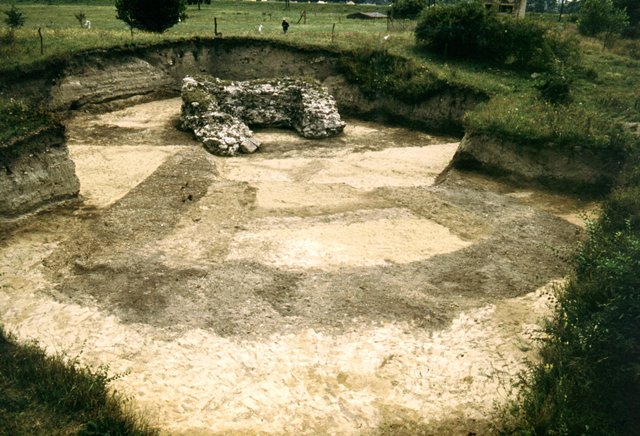 
The
more detailed history of the fort of the middle of the 3rd
century AD is unknown. The visible traces of rebuilding of the
defensive system date to the 4th century AD. During the
reign of Constantine Dynasty the old fortifications of the
North-Pannonian frontier were reconstructed and new ones were
build. The construction changes of the fort in Iža - with
building a bastion towers at the northern gate as well as on three
out of four corners, happened probably at those times. The towers
were now much more prominent, and allowed better protection and
fortification. The last building activity in he fort area goes
back to the end of the 4th century AD under the rule of
Valentinian I. - who made the last attempt to strengthen the Roman
power on the middle Danube. The Roman building activity of this
period is in Iža documented by several finds of stamped bricks.
At this time the northern gate was closed by building a wall
inside the gateway and in front of the southern gate a semicircle
ditch with bottom paved with flat stone plates was added. Since
than probably was the fort protected by a system of 5 lines of
V-shaped ditches and ramparts.
The
Roman power pressure caused another war conflict. In 374 AD Quadi,
Marcomanni and Sarmatian tribes crossed Danube and invaded Roman
territory. In the spring of 375 AD Valentinian I. led another war
campaign against Quadi and fort in Iža could have played an
important role. The marching camp found in the north west
proximity of the fort was probably build also during this time.
The sudden death met Valentinianus I. in Brigetio in autumn of the
same year - during the peace negotiations with Quadi. After his
death and after the defeat of Roman army at Hadrianopolis,
weakened Roman Army was not able to protect the Empire borders
against the increasing number of attacks and Pannonian territory
was invaded by more barbarian tribes and nations.
The
fort in Iža was probably destroyed during these invasions. In its
ground temporarily settled Quadi, mixed with groups of newcomers
presumably Goths or Allans. After their departure stayed this area
unsettled.
Many
questions remain unanswered even after many years of research.
Unknown is the name of the military unit serving at the fort -
bridgehead of Brigetio. Questioned is also the ancient name of
Kelemantia, used for the fort according the descriptions of
geographer Klaudios Ptolemaios. However, the research impressively
broadened originally fragmented knowledge about the building
history of the fort, and also added to the knowledge of the
important historical events of this territory in period of the 2nd
to the 5th century AD.

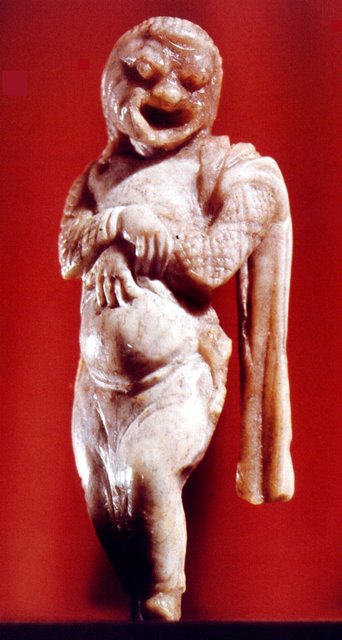
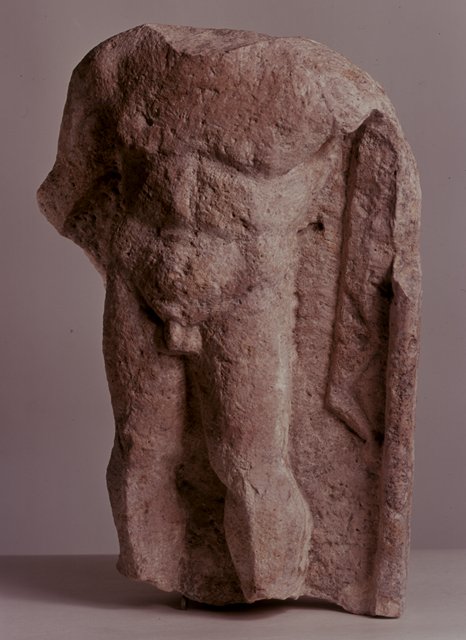

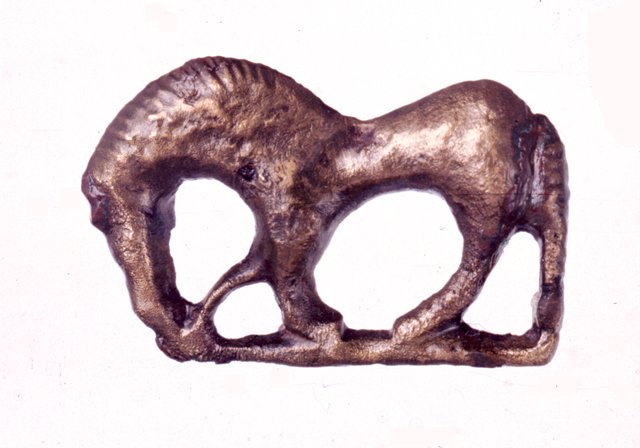
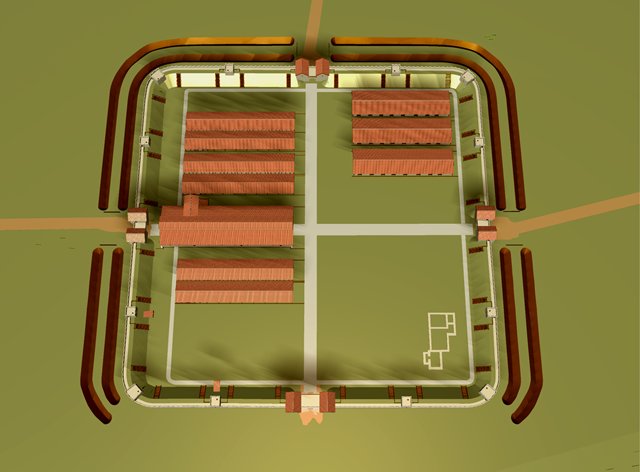
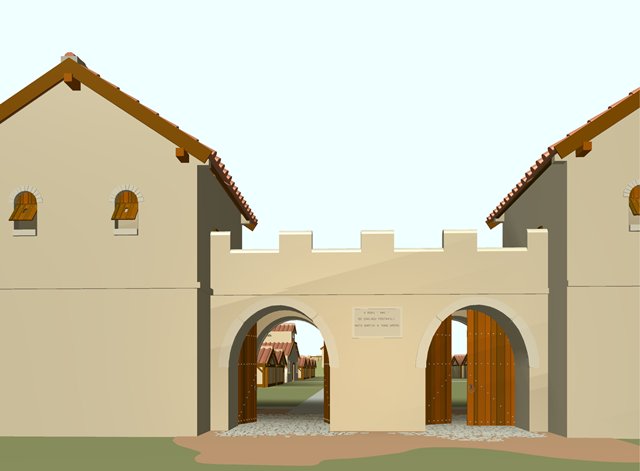
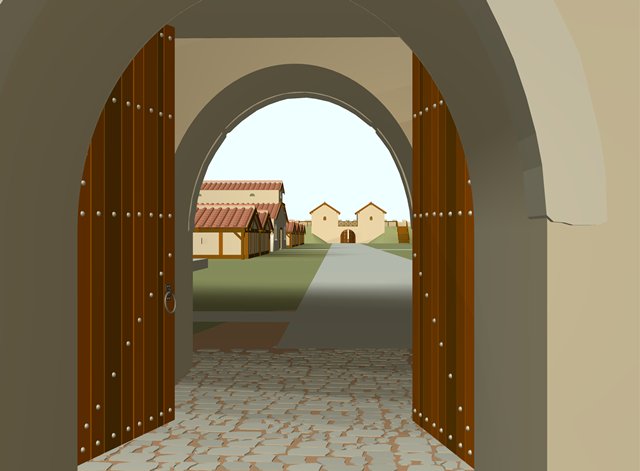
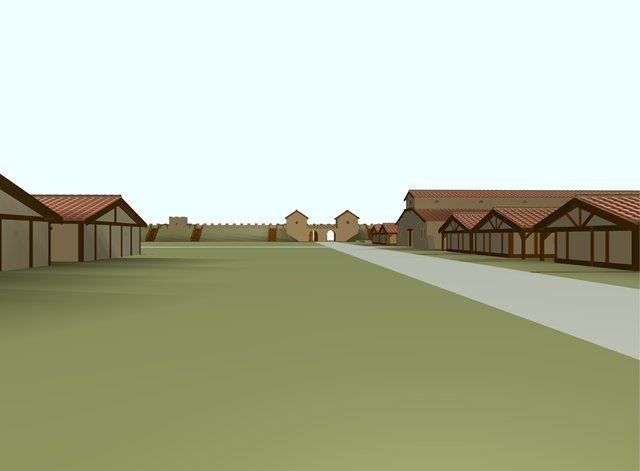
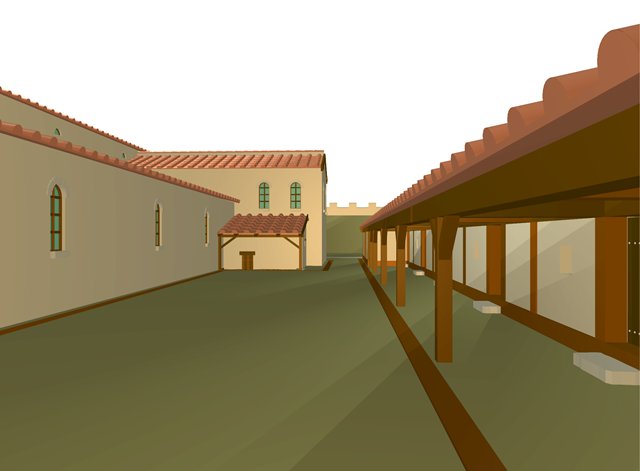
|